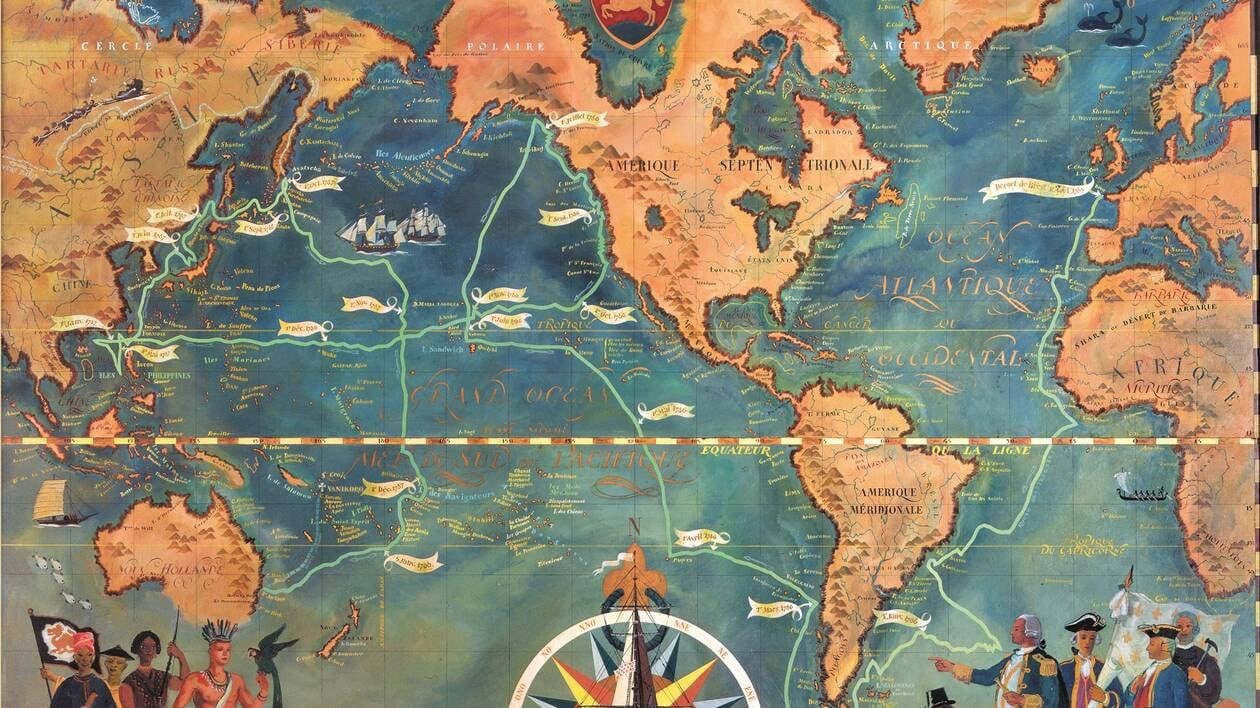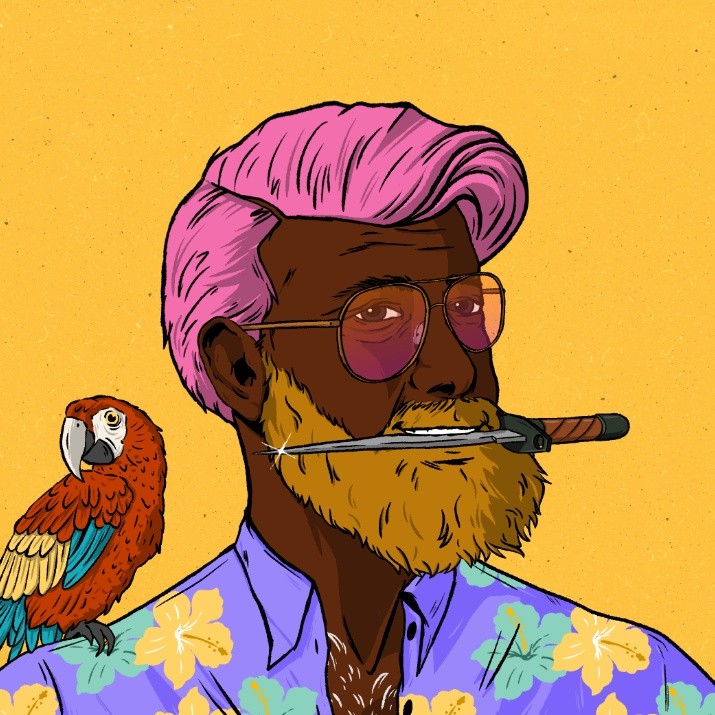
Nov 16•18 min read
Story of The Explorer Guild: Chapter 2

Meanwhile - unbeknownst to Jules, over a century in the past and several thousand miles away - a man resembling him awakens suddenly. His head is foggy and his vision blurred, he rubs his eyes as he begins to come to his senses.
“Where am I?” He wonders to himself as he sits up and looks around, bringing his surroundings into focus.
He lays in a bed within a small wooden room, filled with bunks stacked from floor to ceiling. Most are empty, but some are apparently occupied as he hears the snores of someone out of sight. As he gets his bearings, he vaguely remembers something about a pigeon, a large metal capsule, bright lights and a loud noise unlike anything he had heard before. He pivots his body so his legs hang over the edge of the bed, trying to clear his mind and remember what had happened, but his efforts are distracted by something repeating in his head:
“Six, four, nine, one…six, four, nine, one…”
The man buries his face into his hands, trying to clear his mind, when he is interrupted by a booming voice coming from the far end of the room.
“Verne! You’re late! Get out here on the double!”
His head snaps to his right where he sees the silhouette of a figure with hands on their hips, who then turns and heads up a small ladder at the far side of the room; not knowing why, he feels he must follow…and with some urgency.
“Verne…my name is Verne,” he remembers, but at this moment he cannot for the life of him remember much more.
He stands quickly, only to lose his balance and fall back onto the bunk, as it feels as though the floor is shifting beneath his feet. “I must be on a ship,” he concludes, now feeling the gentle swaying of the room around him. Gathering himself, he stands again, gaining his balance this time, and makes for the ladder in haste.
Verne steps onto the deck to the sun high in the sky, clear skies and blue ocean, with many others around him busy at work, their faces somewhat familiar. Instinctively, and to his surprise, he walks over to the far side of the deck and begins assisting crewmates extend ropes to bring down sails. “I know this ship, and I know these men,” he thinks to himself, “if only I could remember more…”
“Captain Lapérouse!” a man calls out from behind him, “we have sight of land ahead and have begun preparations to anchor on your order!”
“Very good, Mr. Bernard! Continue heaving to and bring us closer. Signal the Astrolabe to come up, and have landing parties make ready to head ashore!”
The booming voice from astern comes from a man who stands tall and proud as he looks out over his men busy at work before him on the deck below. “The captain,” Verne thinks to himself, as his surroundings become more familiar, “we are on an expedition of some importance, and he is our leader.”
Verne’s attention is then drawn to the waters off the port side, where another large ship - the Astrolabe - comes up alongside, a crewmate signaling back that they’ve acknowledged their orders.
“Drop anchor, Mr. Bernard!” the Captain calls out.
“Drop anchor!” Mr. Bernard relays to the deck hands, who spring into action and relieve tension on the ropes, carefully lowering the heavy piece of iron into the depths below.
The Astrolabe then pulls away towards the island ahead, dropping anchor not far from the beaches. Verne watches as they lower small boats full of men into the water, and row off towards the shore.
“Easter Island, Mr. Verne! I hear stories of giant statues carved out of stone which cover its countryside,” a crewman beside him exclaims. “A sight to behold I would imagine! I hope the Captain allows us to go ashore and witness the marvels for ourselves!”
“OF COURSE,” Verne thinks to himself as he begins to remember, “this is one of the first of our stops on our expedition…our expedition to...voyage around the world!”
Once the scouting parties from the Astrolabe locate a safe place to land boats on the island, Captain Lapérouse selects men to go ashore to meet the locals and explore; Verne is elated to find his name on the rolls of those to go ashore first with the Captain.
He climbs into the small boat with over a dozen other men, who are then lowered to the waters below. Verne is handed an oar, and he and the team begin rowing towards the small inlet on the north side of the island.
As they pull away, Verne looks up at their massive ship, covered with ornate carvings and bright, elaborate paint; she is a beauty of a vessel. Emblazoned across the stern reads her name, one which feels familiar to Verne, but he cannot remember why: “L’Boussole.”

April 26, 1786.
Easter Island was a wonder to Verne.
Rolling fields of green, hills and large mountains, the peaks of which offer stunning views of the surrounding island and ocean beyond. The weather was beautiful, with mild temperatures and clear, sunny skies to the horizon. The local inhabitants of the island are friendly and welcoming, and are even open to trading with the explorers. Palm trees and other flora dot it's landscape, offering the men a bounty of bananas, coconuts and yams to harvest for the adventures to come.
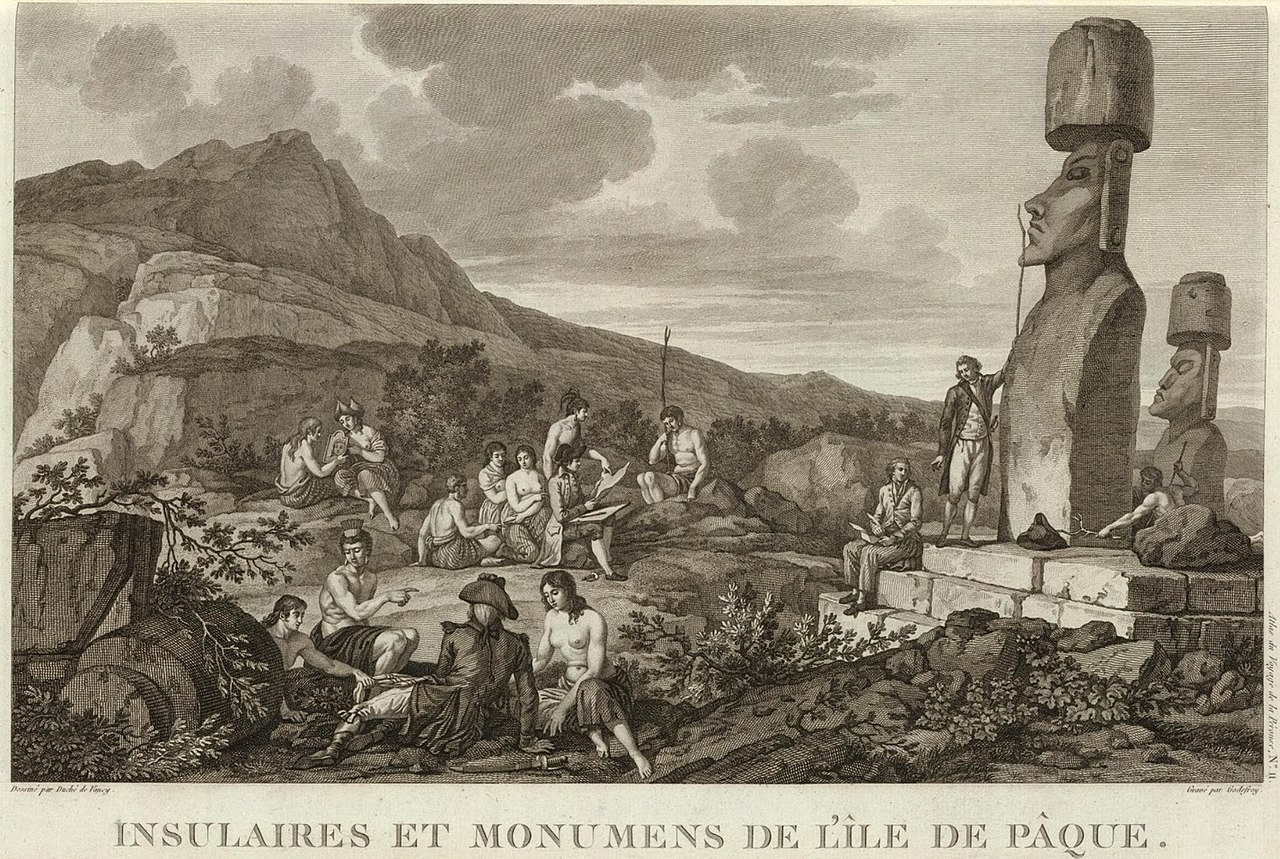
And among all this island's beauty stood hundreds of enormous stone statues carved in the shape of men, placed all over the island's perimeter. Verne notes that most face away from the ocean toward the island's interior, as if standing watch over this slice of paradise. Only 7 of the statues face out towards the open sea. A local tribesman tells Verne that they are the "Moai;" the spirits of their ancestors watching over them. The 7 facing out to sea are the "Ahu Akivi;" they help guide travelers to the island, and keep watch for the return of their lost king to arrive.
Verne is invigorated by the experience and - even though he is still uncertain how he came to be on this expedition - he cannot wait for the travels ahead.
What he has learned, however, is this expedition indeed is historic: they left their home in France several months prior, sailing across the Atlantic and around the southern tip of South America before entering the Pacific.
Although already a long voyage to this point, they have much further to go, exploring the corners of the Pacific Ocean, then beyond to the west to Australia, India and Africa, before sailing back into the southern Atlantic, and eventually north for home. A true voyage around the world, in the footsteps of the great Ferdinand Magellan!
"Friends," he tells his bunkmates below deck after returning to the ship, "I am a new man. The wonders now behind us have given me the motivation to take on all of the adventures ahead, regardless of the challenge. Let us point towards the horizon, and see all this world has to offer!"
The next morning, the Boussole and Astrolabe raise anchors and bid farewell to Easter Island, sailing north for the open ocean.
Adventure!
Verne quickly becomes a leader amongst the men, as his love of adventure shows through during the long days of sailing across the Pacific. He hungers to explore beyond where any man had been before.
And explore they do!
In May, they arrive at the Sandwich Islands (today the Hawaiian Islands), becoming the first Europeans to set foot on the island of Maui, where they take in the beauty and bounty of this tropical paradise.
They then sail north east, taking advantage of the summer warmth, towards the rocky shores of the North American coast. Here they find enormous mountains - taller than any they'd seen before. So tall in fact, they are still capped with snow in the middle of June. They also meet the Tlingit people, who welcome them as friends, trading for food and furs in exchange for goods the explorers brought from the tropical islands of the Pacific. Throughout it all, not one man aboard has endured illness or injury, nor become lost to the seas.
"Yet another exhilarating place to behold and people to meet!" Verne tells his friends. "We are truly at the forefront of discovery; our families at home would not believe the sights we've seen. They will write books of our adventures for years to come!"
But not all of the expedition is filled with such fortune.
They sail south along the coastline of the North American Continent (today, Alaska) until when, in July, they discover a large bay with a narrow inlet, surrounded by steep mountains, and walls of ice at the far end. Captain Lapérouse names the bay "Port of France." The Tlingit people call it "Lituya," or "the lake within the point."
Verne is once again stunned by the sight of the features before him, but notices something ominous about the landscape before them: the mountains surrounding the bay appear to lack any vegetation at all, a sharp line between clean stone and thick forests hundreds of feet above the waterline. It appeared as if God himself had wiped away all the features around the bay as easily as one wipes dust from a window sill.

Pictured: sketch of their ships anchored within Lituya Bay, drawn by one of the many scientists on the expedition.
It is here, in Lituya Bay, where the expedition endures it's first loss: Captain Lapérouse dispatches 3 boats from inside the bay to the small passage which leads back out to the ocean to assess the water depth in preparation for departure. As the men approach the opening, the tide begins to ebb faster and faster. Before long, the tide carries them unwillingly out of the bay and into breaking waves as the fast tide runs into the heavy currents of the Pacific. Two of the three boats are lost, along with 20 men.
On this sorrow day, Captain Lapérouse orders the men to depart as soon as possible from this place. Verne senses the despair in his Captain while sitting with him in his quarters as they open sails and head to the south.
“Nothing remains for us but to quit with speed a country that had proved so fatal,” Lapérouse confides in him, as he annotates the same into his journal.
They share a drink of rum in memory of their lost crewmates before putting the bay behind them for good, continuing south along the west coast on the American continent.
Interesting note: Lituya Bay's uniquely long and narrow geography, with high, steep mountains surrounding it on all sides, makes it uniquely treacherous to sailors. The speed at which the tides move in and out create large breaking waves at its opening. Further, the giant glacial walls of ice and rock at the far end occasionally come free and fall into the bay below, producing some of the only known mega-tsunamis in the world, where the waves rise so high they wipe the shorelines and mountain walls clean of soil and foliage hundreds of feet above the water. The last such mega-tsunami in Lituya was in 1958.
The adventure continues, however, and quickly the men come across new wonders once again: They witness large plumes of smoke from atop a large mountain as they reach the northern coastline of California; a volcano (Mount Shasta) erupting. Verne and his crewmates watch in awe from the decks of the Boussole and Astrolabe as smoke and fire fill the skies, unaware they are likely the last who will witness it's eruption.
Continuing south, they stop at the Presidio de San Francisco - a Spanish outpost at the opening to San Francisco Bay - where they map the region before continuing further south to Presidio de Monterrey. Here, the explorers visit the Spanish missions and meet the local indigenous people. Lapérouse and his men are the first Frenchmen to visit California since the Spanish established these settlements, and learn a great deal about the region, it's people and it's trade goods.
Now having touched the far northern and southern points of the eastern Pacific Ocean, the expedition loads up supplies for the next major leg of their voyage: due west across the Pacific to the shores of Asia.
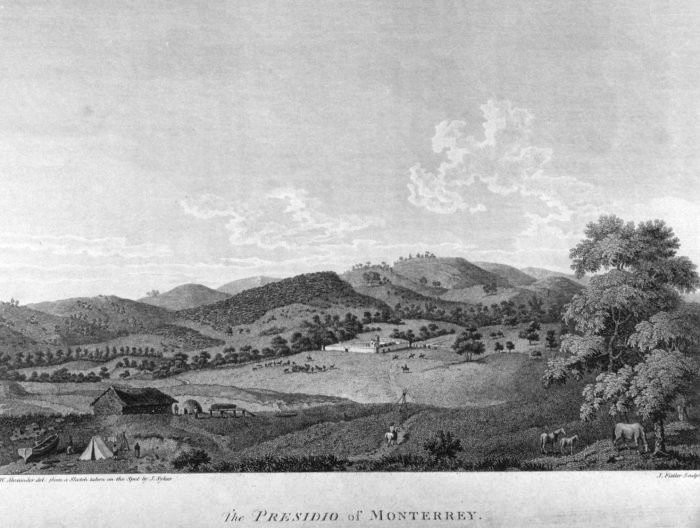
"From icy mountains and unforgiving waters of the north, to white sandy beaches in the south; what a change to behold on the same coastline," Verne shares with his Captain as they deploy sails and watch the American continent slowly disappear over the horizon behind them.
January 2, 1787
After exactly 100 days of sailing west, nearly straight along the Tropic of Cancer, the Boussole and Astrolabe arrive at the Port of Macau on the southern China coast. Here, they trade furs from the American north for fresh goods and supplies, while also taking time to rest from their voyage and conduct repairs on their ships, which have now endured nearly 18 months at sea.
Verne keeps his mind occupied during these long stretches at sea by spending time with the scientists on board, who throughout the journey have meticulously documented and drawn the lands, animals and people they have met on their voyage.
They are doctors, geographers, physicists and illustrators; the minds tasked with capturing all the men had seen and learned to bring home.

Pictured: illustrations from Lapérouse's expedition around the world.
Verne learns a great deal from these men, and enjoys reminiscing with them on the adventures behind them through their imagery. Looking over their sketches, he can only imagine what new wonders might lay ahead.
September 7, 1787
New wonders did indeed lay ahead: They would next sail to Manilla, then explore the Sea of Japan, even discovering a new strait, dubbing it "Lapérouse Strait."
They travel to Formosa (Taiwan), Russia, Japan, and many of the small islands in between. At each they encounter new peoples and their vibrant cultures, foods they had never tasted before, flora and fauna they had never seen, and more.
Here, on the Kamchatka peninsula - their last stop in Russia - Lapérouse has much of what they documented on the journey thus far sent back to France, giving their fellow countrymen a small taste of the adventures they had been on.
.jpg)
Pictured: The chart from Lapérouse's exploration of the Sea of Japan in 1787, included in his message sent back to France from Russia.
From here, with the cold seasons now approaching, Captain Lapérouse orders the ships south to Australia, where they plan to winter and resupply for the final year of their voyage and, ultimately, the journey home.
Verne, per usual, is thrilled with each new sight. Yet, in the back of his mind, he still wonders who he actually is and how he came to be on such a fortunate adventure. What was that bright light, the loud noise, and the curious metallic capsule still in the vague corners of his memories? What will he encounter when they ultimately return home?
And why, throughout all of these months of exploration, does his mind still occasionally repeat the same numbers which rung in his head that day he awoke suddenly in his bunk?
“Six, four, nine, one…six, four, nine, one…”
What does it all mean?
March 10, 1788
The Boussole and Astrolabe arrived at Botany Bay, Australia, in January, where the British have established a small colony. The explorers are welcomed, as well as offered supplies and assistance with repairs.
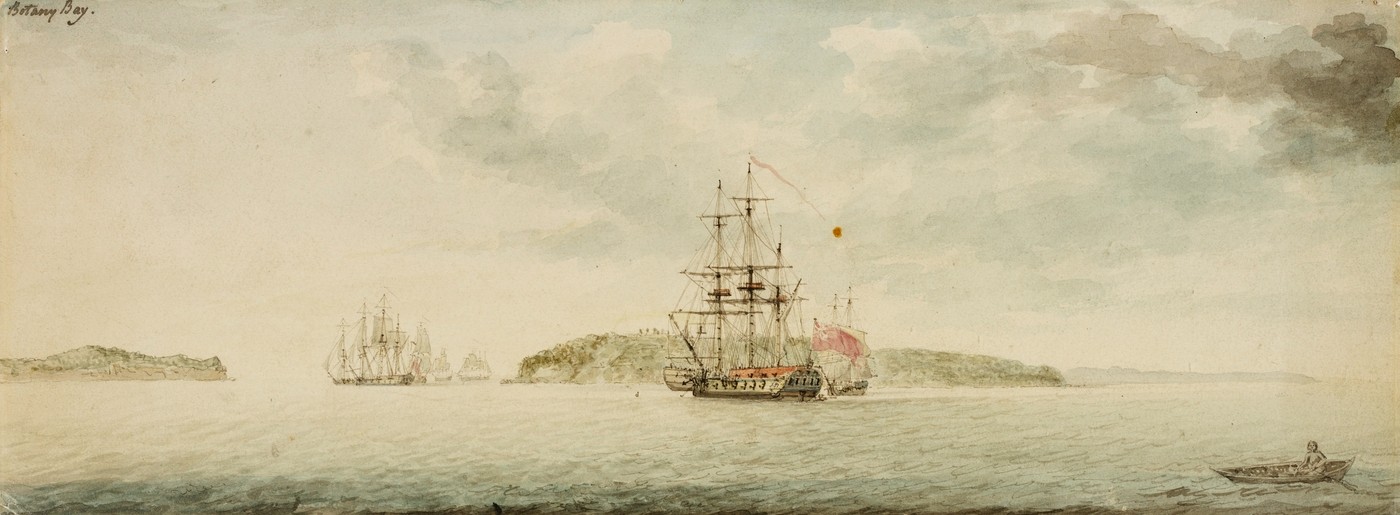
Pictured: Botany Bay, 1788
After six weeks in the bay, they are now ready to depart once again. Captain Lapérouse dispatches a letter to France informing them they should be expected home in a year's time. He then orders the men to make ready to get under way, and head for the Solomon Islands to the northeast.
"Raise anchors and set sails Mr. Bernard!" the Captain calls from his post at the stern.
"Raise anchors men! Set sails!" Mr. Bernard relays to the men on deck.
Verne assumes his position and extends the ropes bringing the topsail up into the sky above; it inflates quickly as the wind takes hold. The Boussole then leans forward into the waves of Botany Bay and sails out towards the Coral Sea.
The final leg of their adventure has officially begun.
May, 1788
After a quick stop in New Caledonia, the expedition sails north past the island of Vanuatu towards the Santa Cruz Islands, where they plan to resupply and chart the islands of the region before continuing west for the Torres Strait and Indian Ocean beyond.
The weather is beautiful: clear skies, calm waters and favorable winds carry them confidently on their journey. Verne stands on deck alongside one of the crew's scientists, looking over their maps of the area and identifying each of various islands as they pass.
Then, to the north, they spot another island off on the horizon; the scientist extends his sight glass toward the small mass of land, then looks over his chart, noting the island in question is not present on his maps. He calls over Captain Lapérouse.
"Sir, we have land in sight to the north which has not yet been charted. I recommend we change course and approach to map it's shores and document its existence. There may also be value in going ashore if it is indeed unexplored," he explains to the Captain.
"Very good, Mr. Allaire," Lapérouse replies, then turns to his boatswain: "Mr. Bernard, have the men set sails to adjust our course for the north. Please signal the Astrolabe to do the same and to closely follow our lead."
"Aye sir, setting sail," he replies, before relaying the order to the deck crew.
Verne and his crewmates pull the ropes to swing their sails as the helmsman turns the rudder, pointing them north towards the island. After tying off his line, Verne walks up to the bow and leans against the rail, watching the small point on the horizon slowly grow as they approach.
He is filled with excitement: "A new land!" he thinks to himself, "one which has not yet been discovered!" Verne cannot believe, even after years of wild adventure to this point, that he now has the chance to add a new discovery which will forever exist on the maps of men. He then wonders, since they are about to be the men who discover it, what name they would choose to give it on their charts.
Verne makes out two mountains atop the island as they get closer when, suddenly and unprompted, his mind produces a name: "Vanikoro."
Verne's excitement quickly fades, replaced with a vague sense of dread. All at once, memories begin flooding back into his head.
"I know this place," he thinks, "I've written about this island."
He then remembers it all: the pigeon in the park, his invention of a cloning machine, the crowds at the presentation in Amiens, the loud noise and the white light as his machine powered up, and finally his arrival in his bunk below the decks of the Boussole.
Verne's thoughts are interrupted as the ship approaches and Captain Lapérouse calls out, "bring us up near the beaches Mr. Bernard! Have the landing parties make ready to go ashore!"
"Aye sir!" Bernard shouts back.
"My name is Jules...Jules Verne," Verne says to himself as he comes to his senses, feeling a sense of pride. "My machine must have worked! Perhaps not as planned...but it indeed worked! Cloned and placed into the most wonderful adventure of exploration!" He then thinks back over their journey, and how fortunate he was to have lived it. "I wonder, though, how many of us did the machine create? How many other adventures have they been on?"
His thoughts are interrupted yet again: “Six, four, nine, one…six, four, nine, one…”
His elation at this discovery is soon mixed with the fear of what is about to happen. He turns and calls out, "Captain Lapérouse! The reefs sir!"
This is all he is able to muster, as the Boussole, now nearly upon the island, suddenly begins to vibrate from the depths of her hull.
Verne, along with many others on deck, are shaken off their feet as the vibrations grow into the loud, dreadful sound of heavy wood splintering and snapping under the weight of their ship pressing against the coral reefs hidden beneath the waves.
As the Boussole begins to break up around him, sending many of his crewmates into the ocean below, Verne wonders if the other explorers created by his machine had experienced the marvels he was so grateful to have seen and experienced...and how many of those explorers would end up lost, as he was about to become.
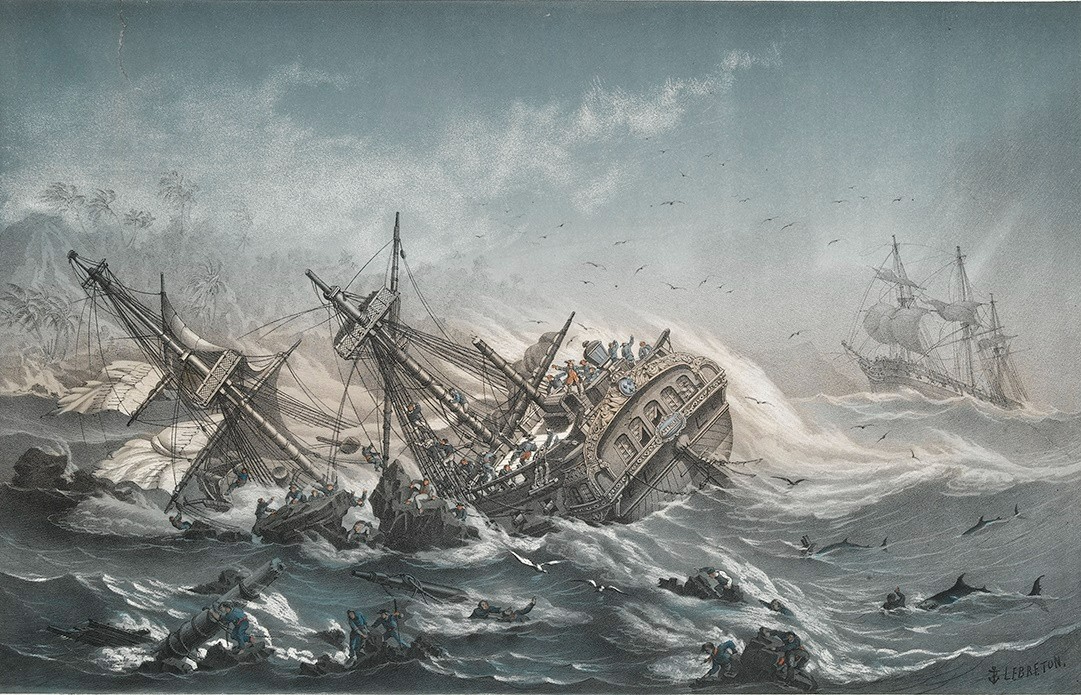
The last thought that runs through his head is a familiar one; one so familiar he must have written it himself:
"'Ah! it is a fine death for a sailor!' said Captain Nemo, at last. 'A coral tomb makes a quiet grave; and I trust that I and my comrades will find no other.'"
